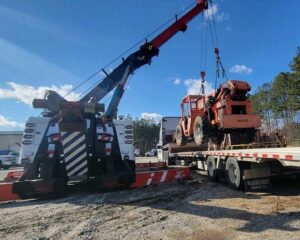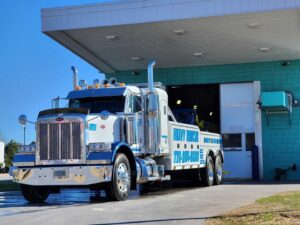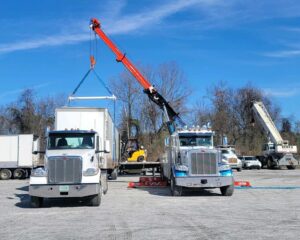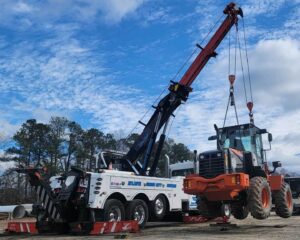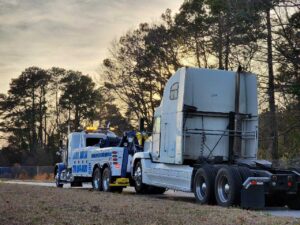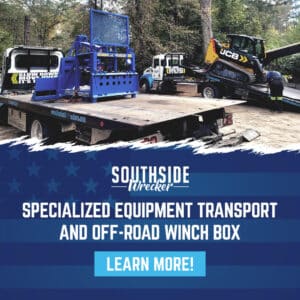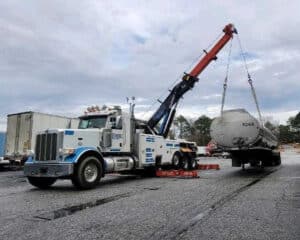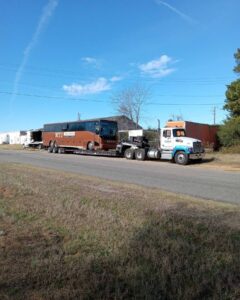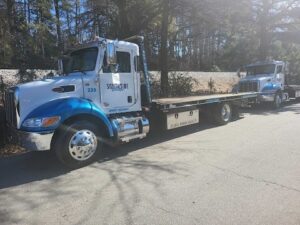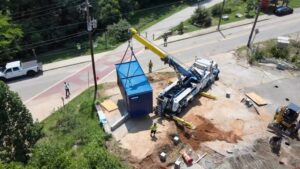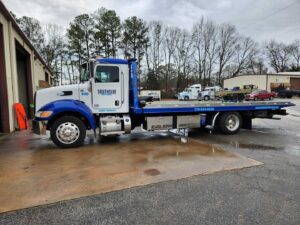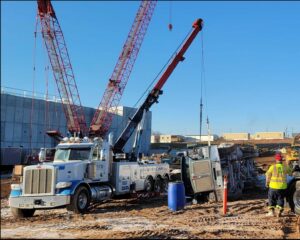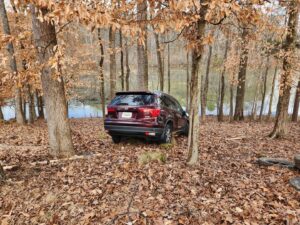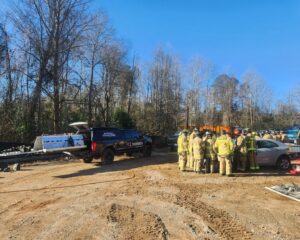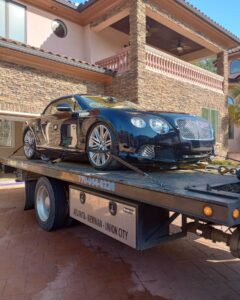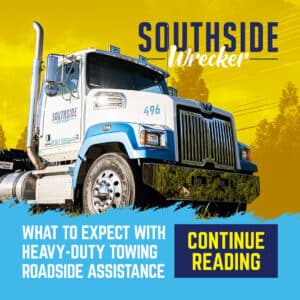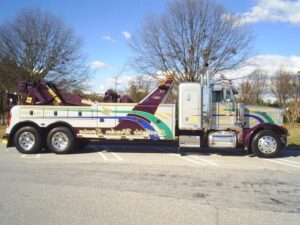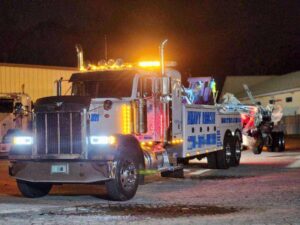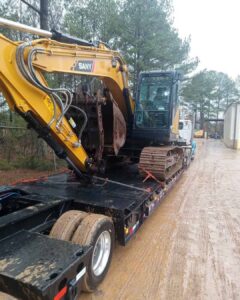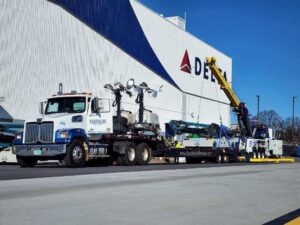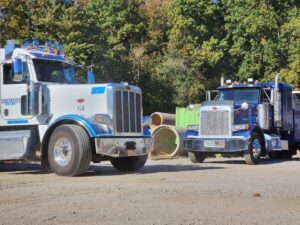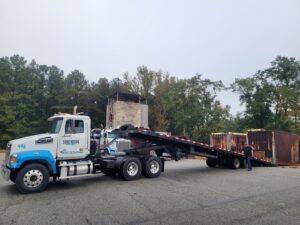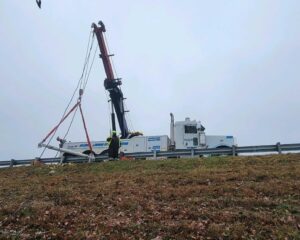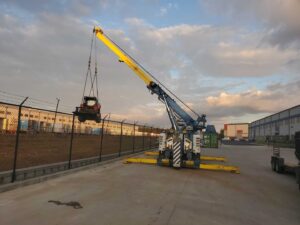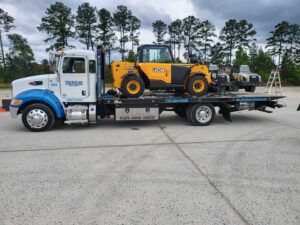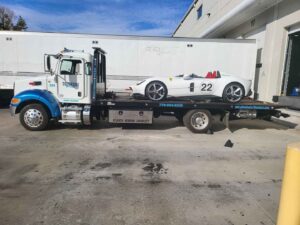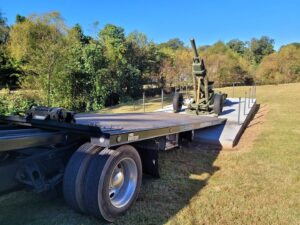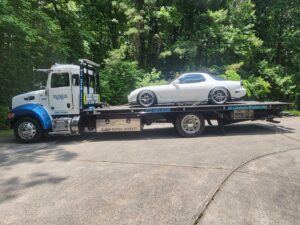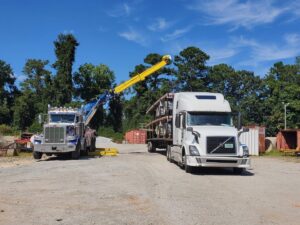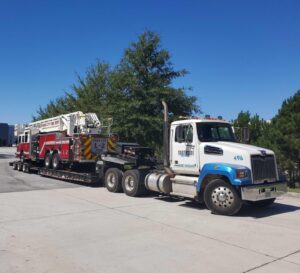How to Survive (and Avoid) A Tire Blowout
Think of your tires as the protective wall between you and the road. When your tires are damaged, punctured, worn down, under-inflated, or over-inflated, you could experience a tire blowout. Having a tire blow out can endanger you and your car. The best plan is to be pro-active with tire care and attentive to possible warning signs. As an emergency service, the team at Southside Wrecker have seen our share of tire blowouts and these are the most common warning signs:
Warning Signs:
- Overly Worn Tires—Depending on how much you drive, your tires could last as short as three years with regular usage, but as long as ten years with more limited use. Most professionals advise having your tires inspected once they hit the five-year mark even if you have not observed noticeable problems.
- Low Tire Tread—Tires with low tread can make it difficult to steer properly even in dry conditions.
- Uneven Tire Wear—This typically happens because of suspension problems, alignment issues, or inflation problems.
- Tire Weak Spots—Look for blisters or bulges
- Inflation Problems—Under-inflated tires make it challenging to steer and control your car. They are also highly susceptible to punctures. Over-inflated tires will cause your car to not be fuel efficient as well as impact your traction. Carefully following recommended PSI for your tires is vitally important.
Basic Prevention Tips:
- Check your Tire Pressure Regularly—Keep a tire pressure gauge in your car to make regular checks easy. You can purchase one for under $10.
- Choose Good Quality Tires—Do your research and make sure to purchase tires with a strong reputation. Quality is worth the extra cost in this case.
- Do NOT Drive on At-Risk Tires—If you know that your tires are compromised, do not continue to drive on them. You are risking your safety as well as taking the chance of your car undergoing greater damage due to a blowout.
In Case of Emergency and Your Tire Has Had a Blowout…
- Stay Calm and Do NOT Freak Out—Do NOT turn your wheel and do NOT slam on your breaks in a panic. Take a breath and stay collected.
- Keep Steering Straight—Keep both hands on the steering wheel and try to keep your car going straight. You may feel your car wanting to fishtail or pull one direction. Avoid sudden jerking of the steering wheel and stay straight. Attempting to turn your steering wheel or correcting the direction could lead to your car spinning out and causing a collision with another vehicle.
- Let Your Car Gradually Slow Down—It is a natural instinct to want to slam on the brakes, but this will cause serious problems at high speeds. Allow your car to gradually slow on its own. Do NOT attempt to brake until your car is going under 30 miles per hour.
- Maintain Momentum by Lightly Giving a Little Gas–Your blown-out tire will naturally slow down the car so do not do any sudden braking. Giving a few pumps of gas will help you control the momentum of the car while it is slowing down naturally.
- If You are Under 25 MPH, Slowly Turn the Wheel, Brake, and Ease into a Safe Place—Getting your car off the road to a safe spot is ideal once your speed has slowed adequately.
- Breathe, Remain in Your Car, and Call for Help—Your adrenaline will be pumping, but try to relax. Stay in your vehicle and phone your friends at Southside Wrecker for help. We are standing by 24/7 to help!
